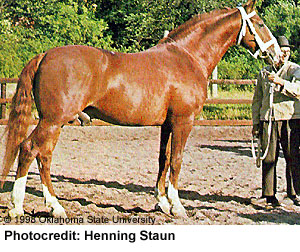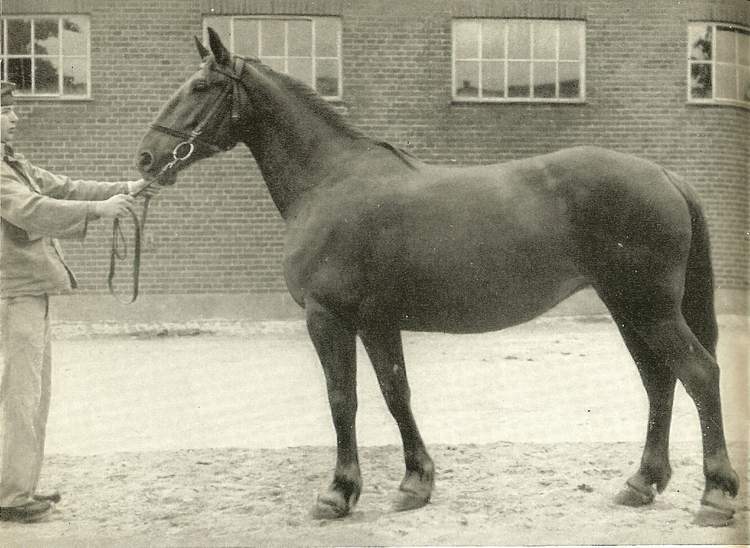

Frederiksborg


Introduction: If you have any comments or suggestions, please click here. The more recent picture on the above left shows how little the breed has changed from the older type shown on the right and the trademark blaze and stockings are visible as well. I believe, however, that the old Frederiksborg breed as seen in these pictures is disappearing, possibly due to the preference for breeding modern sport horses (the traditional Frederiksborg was a coach horse). However, you may see the section below on Breeding for another possible reason for its disappearance.
Names: Frederiksborg. I believe it was named for the stud where it originated.
Origin: In 1562, a famous Royal stud near Copenhagen gave its name to this breed. The Frederiksborg was founded with mostly Italian Neapolitans and Spanish Andalusians, and thus related to the Lipizzaner. Frederiksborgs were nearly finished by World War II, but the breed was revived with German Oldenburgs and East Friesians.
Breeding: Breeding area and studs--Denmark, especially on Zeeland and Bornholm. Breeding completely in hands of farmers. The Frederiksborg horse is the oldest breed in Denmark, and was named after the Royal stud at Frederiksborg, founded in 1562 with Andalusian and Neapolitan stallions. The Pluto strain of Lipizzaners was founded by the Frederiksborg sire, Pluto. The Frederiksborg also shared in the origin of the Orlov breed. In 1862 the stud was dissolved, since which time repeated admixture of Arab and Thoroughbred blood has taken place. The original, pure, luxury breed has changed until today (1960s) it is a popular draught horse (Jutland). (I was not aware of such a connection between the Frederiksborg and the Jutland, and so will leave this as is until I can do more research into it.)
Description:
Action: Strong and lively. Good walk stride and brisk trotting action; able to gallop.
Body: Not much withers; short back with powerful loins. Long, broad and oblique quarters. Well-built shoulders. Considerable depth in girth; good barrel.
Color: Almost exclusively chestnut.
Head: Noble, small, often Roman nosed, very fine and well-set on neck.
Hooves: Relatively small, beautifully shaped, sound.
Legs: Short with rather flat knees.
Size: Up to 16 hands. 16 to 17 hands.
Temperament: Good and lively.
Features: Hard worker. Fast-moving, medium weight warm-blood horse. Very refined.
Uses: Once treasured for school and parade by medieval knights and cavaliers. Now used on farms and for riding.
Accomplishments:
Curiosities:
Profiles:
Conclusion: